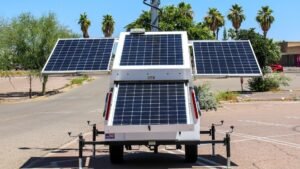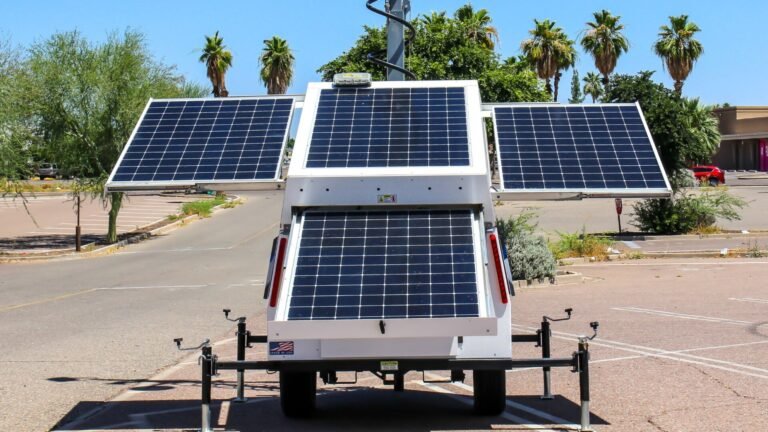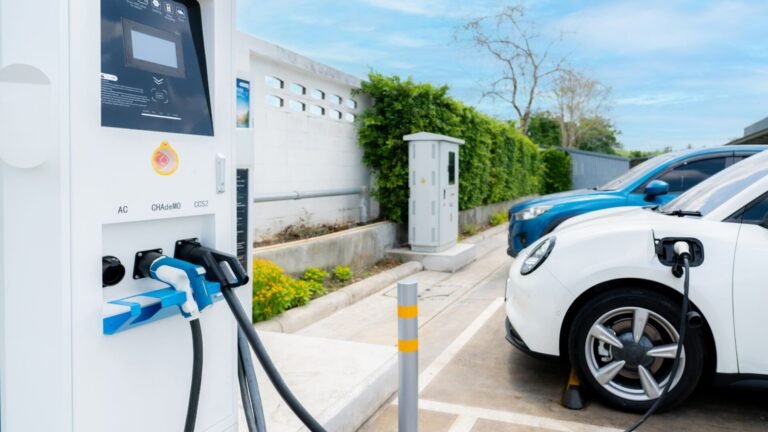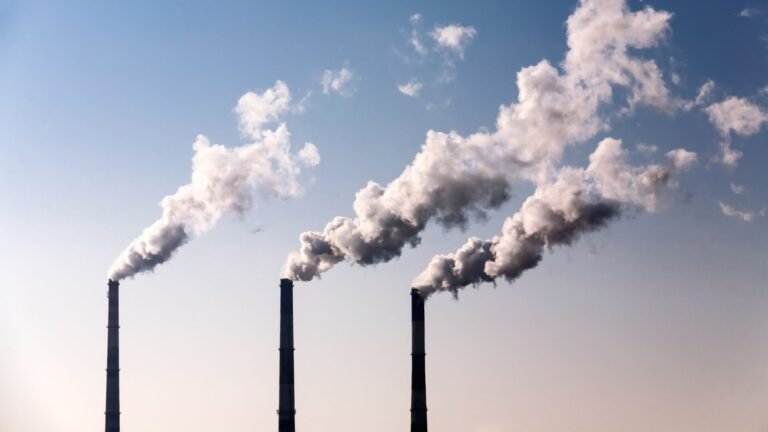As the global community becomes increasingly aware of the urgent need to combat climate change, industries across the board are turning to sustainable practices to mitigate their environmental impact.
This shift toward green solutions is paramount in sectors like agriculture, where the potential for sustainable innovation is vast and critically important.
Viticulture, the cultivation of grapevines, stands out within the agricultural sector, particularly European vineyards that are embracing this green revolution with open arms.
They are pioneering the integration of solar energy into their operations, a transformative approach that marries the industry’s rich heritage with modern environmental sensibilities.
This strategy aligns seamlessly with the eco-conscious ethos of innovative companies like Tamesol, which champions renewable energy solutions.
By adopting solar power, vineyards are not only reducing their carbon footprint but are also setting new standards in eco-friendly production.
This blog delves into the burgeoning synergy between solar power and viticulture, illustrating how this dynamic alliance is not just fermenting fine wines but is also cultivating a greener, more sustainable future.
Through this exploration, we aim to illuminate the myriad ways in which solar energy is revolutionizing the vineyard landscape, showcasing a commitment to environmental stewardship and a brighter, cleaner future.
The Sun’s New Role in Winemaking
Traditionally, the sun has been the lifeblood of viticulture, its rays nurturing the vines, and catalyzing the photosynthesis process that is vital for grape maturation.
This natural interaction between sun and vine is a dance as old as winemaking itself, where the warmth of the sun is captured within the grapes, later to be expressed in the wine’s flavor profile.
However, the role of the sun in viticulture is evolving, expanding its influence beyond mere grape growing to become a cornerstone of vineyard sustainability.
Today, the sun’s role transcends its traditional boundaries, extending its influence to power vineyard operations directly through the adoption of solar energy.
Progressive vineyards across Europe are deploying arrays of solar panels amidst their vines, capturing the sun’s abundant energy and converting it into clean, renewable electricity.
This strategic embrace of solar technology allows vineyards to significantly reduce their carbon footprint, minimizing their impact on the environment.
This shift towards solar energy not only symbolizes a move away from polluting fossil fuels but also epitomizes a commitment to innovation and sustainability in the face of climate change.
The adoption of solar panels in vineyards ensures a reliable and consistent energy supply, an aspect that is becoming increasingly crucial in our technology-driven age.
Modern viticulture practices, from automated irrigation systems to precision fermentation processes, rely heavily on a steady energy supply, which solar power can provide.
Moreover, by integrating solar energy into their operations, vineyards can achieve greater energy independence, reducing their vulnerability to energy price fluctuations and securing their energy supply against external disruptions.
This forward-thinking approach not only enhances the operational efficiency of vineyards but also aligns with a broader industry trend towards sustainability and environmental responsibility, ensuring that vineyards remain viable and productive for generations to come.
Innovations and Advancements
The solar energy landscape is burgeoning with groundbreaking innovations, poised to deepen the integration of solar power within viticulture, reflecting a vital shift towards sustainable energy usage in agriculture.
As of 2024, cutting-edge solar panels have achieved unprecedented efficiency levels, with top-tier models converting over 24% of solar radiation into usable energy.
This advancement signifies a remarkable leap from earlier models, ensuring that vineyards can harness more power from fewer panels, thereby reducing their spatial and environmental footprint.
Moreover, an increasing number of vineyards across Europe are adopting solar trackers, sophisticated devices that adjust the panel’s position to align perfectly with the sun throughout the day, potentially boosting energy capture by up to 25% compared to stationary installations.
This technology exemplifies how precision and smart engineering can coalesce to amplify the benefits of solar energy in agriculture.
Additionally, the versatility of solar power extends beyond mere electricity production; it’s revolutionizing various facets of vineyard operations. For instance, solar energy now propels eco-friendly electric tractors and ATVs, significantly reducing carbon emissions and fuel dependency.
Vineyards are also leveraging solar-generated power to operate advanced climate control systems within wine cellars, ensuring that the wines mature under ideal conditions.
These systems not only stabilize temperatures but can also regulate humidity, crucial for preserving the wine’s quality and preventing spoilage.
By integrating these solar-powered solutions, vineyards not only champion sustainability but also embrace efficiency and innovation, setting a commendable standard for industries worldwide.
The shift toward solar energy in viticulture underscores a broader commitment to environmental stewardship and technological advancement, heralding a new era of eco-conscious and energy-efficient winemaking.
Benefits Beyond the Vineyard
The embrace of solar energy by vineyards transcends the immediate operational benefits, extending positive impacts to the environment and society at large.
By reducing greenhouse gas emissions, vineyards contribute to the fight against climate change, aligning with global sustainability goals.
Economically, the shift to solar can stimulate local job markets, especially in the renewable energy sector.
Socially, vineyards that prioritize sustainability can galvanize community support and attract eco-conscious consumers, potentially influencing broader industry trends toward green practices.
Conclusion:
European vineyards are at the cusp of a sustainable revolution, leveraging solar energy to not only enhance their operational efficiency but also to affirm their commitment to environmental responsibility.
As they harness the sun’s power, these vineyards are charting a course toward a sustainable future, embodying the principles that drive forward-thinking companies like Tamesol.
By integrating solar energy into their essence, these vineyards are not just producing wine; they are cultivating a legacy of sustainability that promises to inspire industries far beyond their own.
As we raise our glasses to the future, let us toast to the vineyards and companies that are making this greener future a reality, one sun-soaked vine at a time.
In weaving this narrative, we not only shed light on the transformative impact of solar energy in European vineyards but also echo the vision of a company like Tamesol, which is committed to advancing solar technology.
Their endeavors, akin to the efforts of these pioneering vineyards, highlight the potential of renewable energy to redefine industry standards, ensuring that our future is not only powered by the sun but also protected by it.






